last edited 2009/04/14 11:49 (
*)
While researching micro-cars and looking whether there are prototypes at least of lightweight car models, and of course it came into my mind the swiss developed Smart which later was bought by Mercedes-Benz, but also found the look-alike Obvio 828 developed in Brasilia:
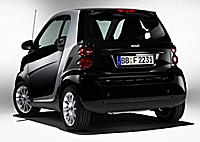
2007/03/12 10:02
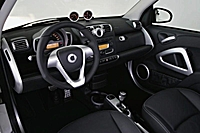
2007/09/05 16:15
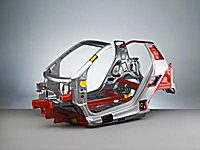
2008/05/14 17:17
Good beginning, lame implementation - or to do things plain wrong:
Technical Details:
- weight: 820-875kg (10.6 vehicle/body ratio @ 80kg human)
- seats: 2
- fuel usage: 5.1L gasoline / 100km or 45 MPG
- fuel: diesel or normal gasoline
- max. speed: 150 km/h or 90 MPH
- US$ 12,000
With a weight of over 800kg this car is a complete failure in efficiency - it doesn't matter if you increase an engine efficiency by 10% or even 20%, if you still waste 90% of the energy to move the vehicle, and 10% of the energy to move the body/goods (e.g. 80kg human). I don't understand why microcars are still 80% of the weight of a large 4 or 6 seat car.
Another example:
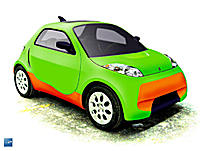
2006/04/11 13:31
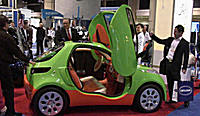
2006/04/11 13:31
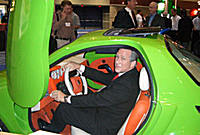
2006/04/11 13:31
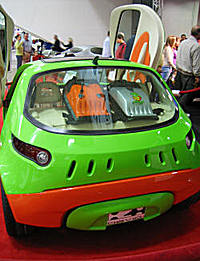
2007/01/16 11:49
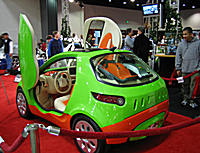
2007/01/16 11:49
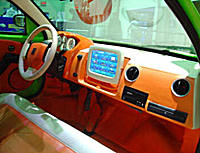
2006/06/28 01:21
Technical Details:
- weight: 600kg (7.5 vehicle/body ratio @ 80kg human)
- seats: 2
- fuel usage: 6L gasoline / 100km or 35 MPG
- fuel: pure alcohol (E100) or gasoline or any mix
- max. speed: 160 km/h or 100 MPH
- US$ 14,000
and here you see what they were doing wrong, with a weight of 600kg, they are apprx. 60% of the usual 1,000kg heavy car, they don't achieve a 60% gasoline usage - in other words, what they gained with a reduction of weight they wasted in an inefficient engine, unbelieveable.
An electric version called Obvio 828E is also in the making.
Source: Obvio 828 
The micro-cars with a traditional cylinder-based engine are themselves heavy and require a stiff and rigid framework which make even small cars still 60%-80% of the weight of a larger cars with 1,000kg and more. So, to reduce the size of the vehicle still keeps it heavy and therefore fuel efficiency (independent whether fossil fuel or electricity) still bad.
For me it clear, the overall vehicle/body ratio needs to be go down well below 4 or at best reach 1-2 - which in essence means at max 1-4x times the to-be-transported persons or goods.
The heavy steel-based frameworks are hard to abandoned at it seems for the car manufactures, but if truly efficient vehicle are developed, the overall weight of the vehicles must come massively down, otherwise the efficiency gains are not achievable at all, no matter how efficient engines might become.





